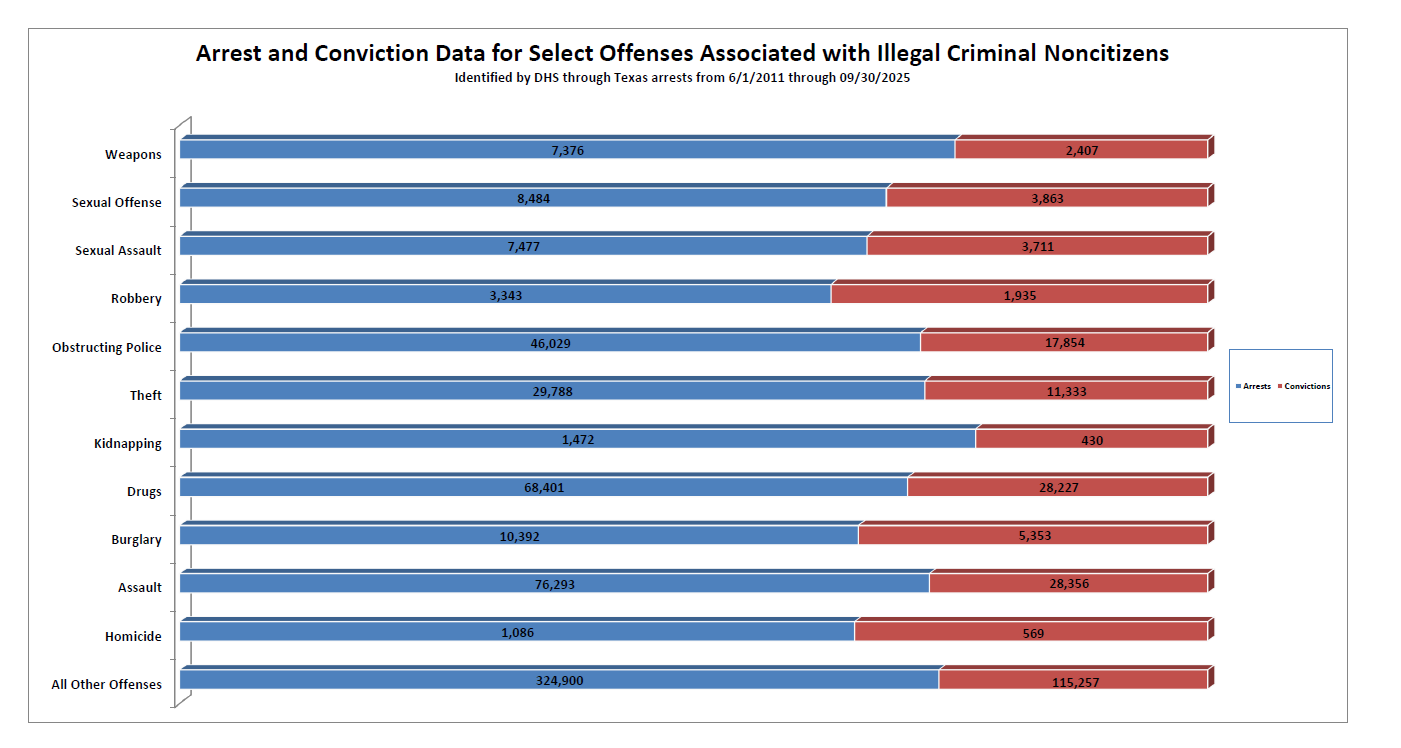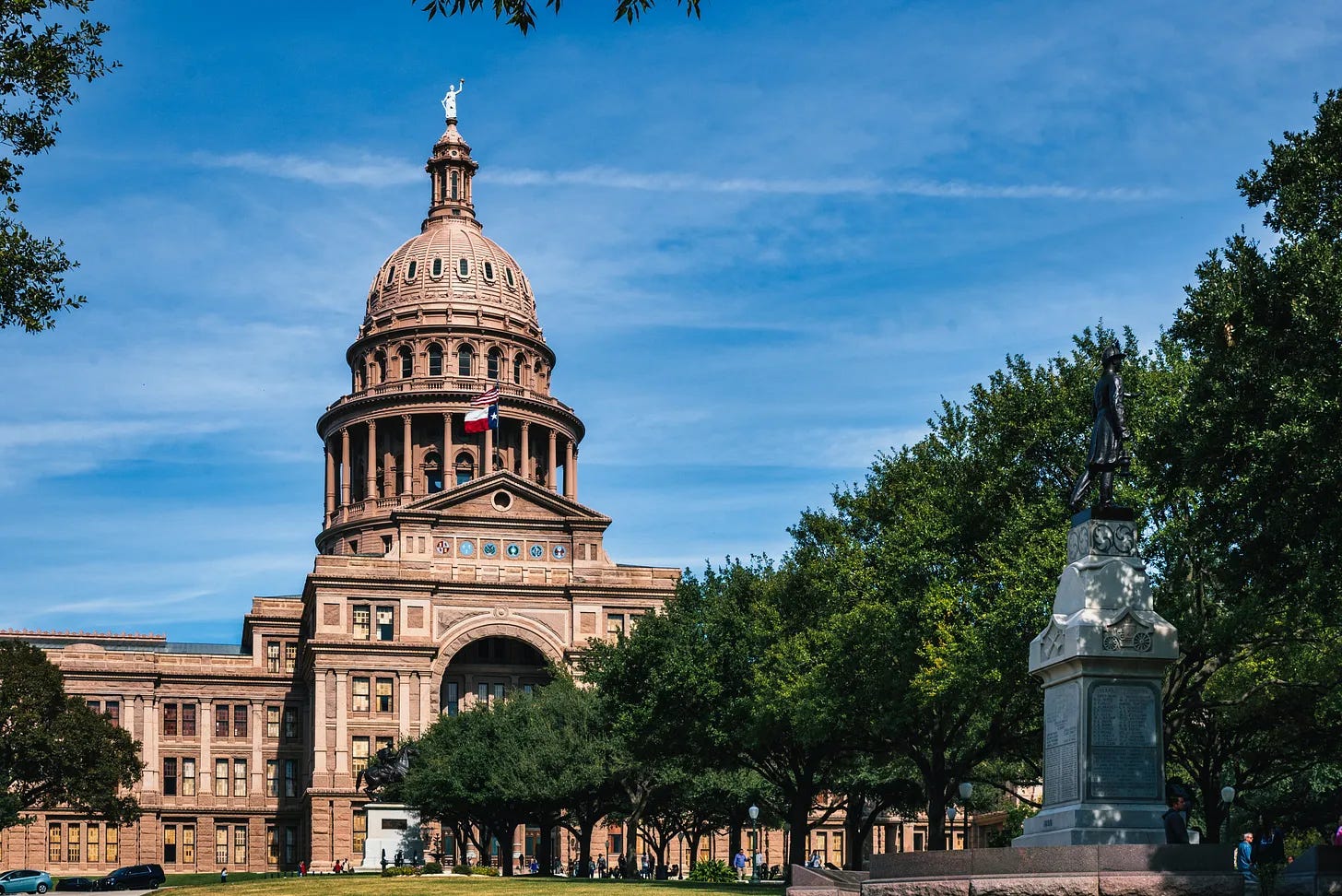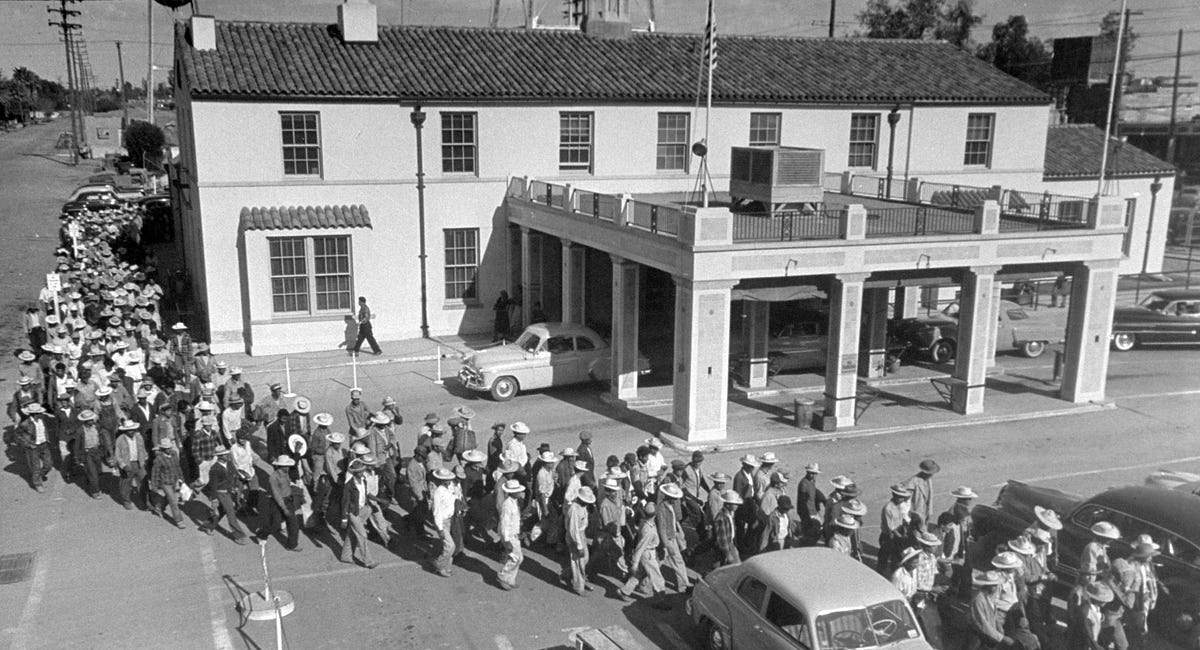Demographic change is radically transforming one of America’s most culturally unique states. Violence against teachers is now a common occurrence in classrooms, more than half a million criminal noncitizens have been booked into Texas jails, and the share of adults in Texas who were born in the state is just 51%, the lowest share since 1900—this figure is significant.

Texas has a very unique identity with some 27% of Texans, including 27% of White Texans (Heritage Texans), considering themselves to be Texan first before any other identity. Among male Texans 32% consider themselves Texan first and among the youth of Texas, those aged 18 to 29, some 40% consider themselves Texan first.
The unique identity of Texas, created by pioneering Europeans in the fires of war and revolution against Mexico, is being buried in a rapid process of demographic change which is also suppressing the political interests of native born Americans in the state.

Likewise, Hispanics Americans have always been part of the story of Texas in the same way they have of California and New Mexico. These Hispanic Americans were roughly 13% of the population of Texas from 1920 to 1960. They were not immigrants or even their descendants, but Tejanos and other Hispanic Americans who were a settled, distinct, regional community of Americans.

By 1970 Hispanic Americans had modestly increased their share of the population to 16.4% while non-Hispanic Whites retained their historic average of roughly 71% of the state population. Overall, the foreign-born population of Texas had reached an all time low of 3.2%. To put it another way, Texas had reached and maintained a demographic equilibrium for nearly 60 years and Texans were a settled people. The state was composed of cohesive though distinct communities of White, Hispanic, and Black Americans. Then radical and unwanted alterations to American immigration policy changed everything.
As a result of the 1965 Immigration and Nationality Act that opened up our borders to the world and the Reagan Amnesty of 1986, that legalized 3 million illegal aliens who subsequently brought more than 1 million family members from abroad, America and Texas began to change.
By 1990 the foreign-born population of Texas had more than doubled to 7.7% and the Hispanic population had jumped considerably to 25.5%. Many Texan cities such as Dallas and Houston saw their foundational White American populations rapidly becoming minorities while in the South of the state settled Hispanic American communities such as McAllen, Texas and EL Paso, Texas saw themselves replaced by Mexican immigrants and their children. Subsequent waves have brought Central and South American peoples to the state.
As of 2020 the foreign-born population of Texas had more than tripled from the 1990 figure to roughly 18% of the population. The 2020 census also showed that Hispanics in Texas comprise 39.3% of the state’s population or about 11.4 million people, though only 1.1 to 1.5 million pre-1960 Hispanic Texans exist in the state today. African Americans in Texas retain their historic average at about 12% of the state’s population, while between 1970 and 2020 the Asian population of Texas has increased from 0.2% to 5.4%, a remarkable increase driven almost entirely by irresponsible legal immigration. Meanwhile, White Texans have been reduced to a minority in a state their forefathers fought for, established as a nation, and then voluntarily decided to make into an American state. White Texans are just 39.7% of the state’s population, a figure that continues to decline with each passing year.
If it were not for mass immigration, both legal and illegal, Texas today would have a population which was 68% White, 18% Black and 14% Hispanic. The state’s population would be around 17 million, instead of the current 30.5 million people. Texas would look familiar to the generations of Texans who built the state.
Despite all of these numbers, Historic Texans still compose 59-62% of their state’s electorate, for now, and this gives them an opportunity to act. With the slow rate of growth in Latino voter engagement Texans have at least 15 years to organize their pre-1965 political and cultural communities and to push back against the decades of radical immigration policies that have seen Texans of every stripe replaced by the peoples of Latin America.

The foreign-born populace is the natural place to start in any attempt to repatriate recent immigrants and their descendants from Texas. 58.3% of immigrants in the state do not have US citizenship, and are therefore easily removed. Canceling the visas, enforcing immigration law, and revoking green cards of these non-citizens would enable the removal of some three million people. 1.6 million of these individuals would also be illegal aliens in the state, an issue both the state government and current administration are working to resolve. It is likely that the administration would also work with Texas on expelling those 50-52% of legal immigrants who are dependent upon the American welfare state.
On the tail of these adult immigrant departures would be the departure of their children. We take a strong stance against family separation and maintain that immigrants who leave the United States must take their under age children with them. This policy would see up to 2.4 million additional people depart Texas.
Simply enforcing immigration law, and refusing to renew visas or green cards would see up to 5.2 million people depart Texas and would increase the Heritage Texan population from 39.7% to 47% of the state’s overall population. All without stripping a single person of their American citizenship.
With illegal aliens, resident aliens and non-US citizens out of the way this brings us to the very large minority population in the state which is in possession of a US passport. The most efficient method to deal with this population is through mandatory review of their citizenship and immigration paperwork, specifically in the realm of family reunification.
70% of immigrants in the United States are admitted on the basis of family ties, not for work or school. This means that a large portion of people who have acquired US citizenship are likely to have done so fraudulently. The proof for this is best demonstrated by a 2008 incident wherein the US State Department discovered, through DNA testing, that over 80% of individuals admitted into the US as a family member of a “refugee” were not related to that individual. The US government has since mandated DNA testing for refugees who request their family members come to the US, but this DNA testing mandate has not been put in place for any other category of family reunification.
By simply requiring proof that immigrants are related through marriage and birth certificates, and yes DNA testing, it is likely that more than half of naturalized US citizens in Texas, and the nation as a whole, could have their citizenship revoked on the grounds of fraud. Citizenship can also be revoked on the grounds of felonies committed before a person becomes naturalized.
This process could, assuming generously low fraud rate and welfare abuse rate of just 65% (and in all likelihood the fraud rate is closer to the aforementioned 80%), result in 1.4 million naturalized immigrants in the state of Texas losing their US citizenship and being removed from the state and the nation. This brings the repatriation total up to some 6.6 million people.
This combination of policies would restore the demographic mix of Texas to a place where 73% of the population were the descendants of the White, Black, and Hispanic Americans who inhabited the state before the disastrous immigration reforms of the 1960s and beyond.
The state of Texas, were it to be controlled by American nationalists and patriots, could undertake many of these actions itself. The state could pass mandatory e-verify laws to deal with the illegal alien population, and there is no rule or law which prevents state agencies from investigating suspected immigration fraud and bringing the cases before Federal courts to begin the de-naturalization process.
To deal with legal aliens who hold visas or green cards the state can pass laws like those passed by Louisiana and Florida which ban or limit foreigners from buying, renting or leasing property within the state, generally within a certain radius of critical infrastructure. Texas could and should pass similar laws which make it unworkable for legal immigrants to establish themselves in the state.
These are just some of the steps that Texans could take were they to organize politically for their own benefit and to secure their home state.
To reduce recent immigrant demographics even further, and to ensure a perpetual American majority in the United States, a nationwide political movement to engage in a Great Repatriation is needed.


